WWF is a global environmental charity, and we’re bringing our world back to life.
With nature in freefall, we’re urgently tackling the underlying causes that are driving the decline, ...

What do the oceans do for us?
Our oceans are essential for our life on Earth. They provide more than half of the oxygen that we breathe, all of the fish that we eat and are a beautiful space to explore and enjoy.
But unfortunately, life below water is being threatened. Our oceans are polluted, overfished and affected by acidification (when carbon dioxide makes the water acidic, harming animals).

So what can we do to help?
To deal with the problem of pollution, we need to clean up existing pollution and implement laws and measures to protect the oceans form pollutants in the future. As to overfishing, laws can be set to make sure fishing is done in a planet friendly way. Certification can also be used to inform buyers which fish were caught using planet friendly methods so that they can shop responsibly. Finally, to combat ocean acidification we need to promote behaviour change so that less greenhouse gases are emitted.

There are lots of ways that anyone, including you, can make a difference to look after life below water. For example, you could: stop buying and using single-use plastics or donate money to adopt a marine animal.
Everyone can take action to make real change. What will you do?


There are lots of charities that need your help to look after life below water.
For example, The World Wildlife Foundation are endlessly finding ways to help look after the world’s wildlife, rivers and seas, and The Cornish Seal Sanctuary – Sea Life Trust have dedicated the last 60 years to rescuing seal pups.
See how you can support them in their amazing work.
Have you ever wondered what it must have been like to be an explorer in ancient times? They set sail, off into the great unknown with no map to tell them when they would see land again and with no idea of what they might encounter.
To this day, the oceans that cover a whopping 70% of the planet remain a vast mystery to us. We’ve only seen a tiny bit of everything they hold – only 9% of the species in the oceans have even got a name yet!
What we do know, is that the oceans are alive and teeming with life – and their health is directly linked to ours. Take a deep breath. More than half of the oxygen you just inhaled, did not come from trees! It came from the ocean and was made by tiny plants like algae – the slimy green things that you may have seen growing in ponds or swimming pools.
And a lot of Earth’s oxygen comes from a single type of algae that lives in the sea. What would happen if these algae go extinct and stop making oxygen? People have been breathing in the oxygen made by algae for thousands of years, but it was only discovered thirty years ago. As you can see, we depend on the oceans in ways we don’t even fully understand yet.
The oceans also provide lots of different fish to eat, which are both a delicious and nutritious source of protein and healthy oils. Three billion people rely on fish to nourish them.
Life Below Water is being threatened and because we depend on the oceans so heavily, this affects humans in a very real way. Today, the oceans face three main threats.
Fact: The equivalent of one rubbish truck worth of plastic is being dumped into the oceans every minute.
Plastics enter the oceans in many ways. Big plastics get blown into the ocean from bins and landfill sites or they are abandoned in the ocean by fishermen. Tiny bits of plastic called microplastics also enter the ocean in wastewater from our homes. For example, when we wash our clothes in a washing machine, our clothes shed microplastics which are released into the water. Watch the video on the right about how clothes shed microplastics that end up in the ocean. Another example could be if you brush your teeth with toothpaste containing microbeads, these little beads go down the drain.
Plastic pollution has devastating effects on living things in the sea. Sometimes fish get tangled in the plastic, other times they confuse plastic for food and eat it. The plastic then gets stuck in their stomach so they can’t eat real food. Eventually, they die. If you eat fish, you are probably eating small amounts of microplastics too. Microplastics are also starting to affect the health of some algae, interfering with the way that they make oxygen for us to breathe.
One of the worst zones of plastic pollution in the sea is called the Great Pacific Garbage Patch. Watch the video below about plastic pollution and the Great Pacific Garbage Patch.
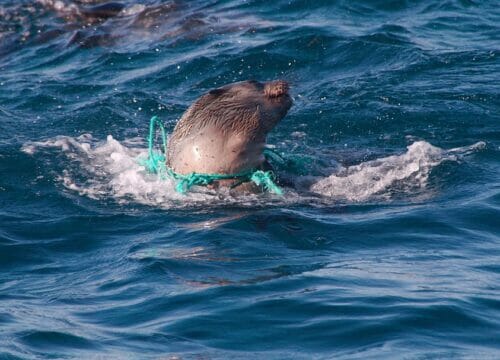
Fact: Oil tankers have spilt nearly six million tonnes (about 7 billion litres) of oil since 1970. Bear in mind that 1 litre of oil can pollute 1 million litres of water.
Oil spills happen in many different ways. They happen when:
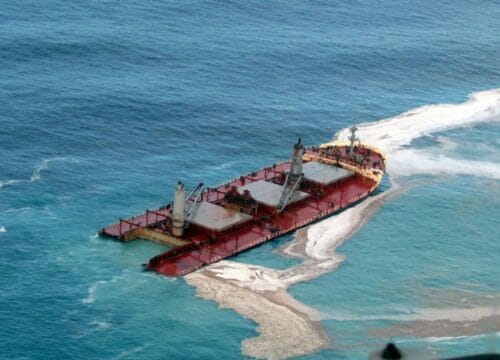
Oil does some terrible things to sea life. Oil coats birds’ wings so they can’t fly and clogs the blowholes of whales and dolphins, making it hard for them to breathe and communicate. It also makes seafood unsafe for humans to eat.
Watch the video below on the effects of oil.
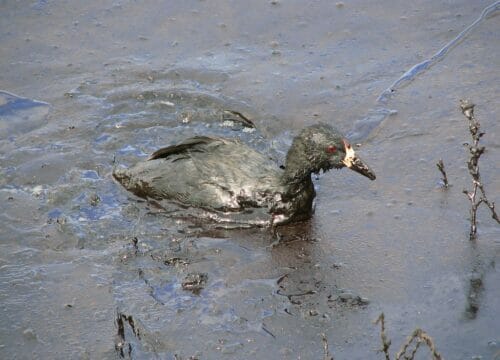
Fact: Only 1% of a pesticide chemical reaches its target. The remaining 99% goes into the environment.
Pesticides are chemicals used by farmers to kill insects and other pests that harm their crops. Though pesticides are sprayed on farms, rain washes a lot of these chemicals from the land into the ocean.
Pesticides can change the way animals’ bodies are wired to work and so they cause disease in sea animals.
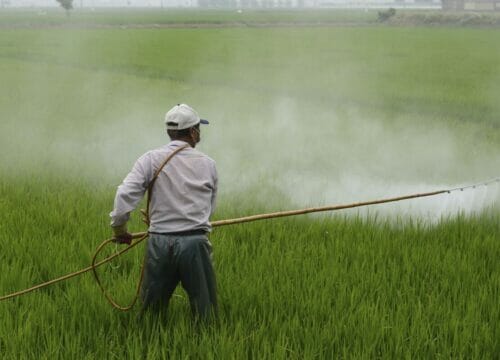
Fact: More than 80% of the world’s sewage is discharged into the environment without being treated first.
In some places in the world, sewage is flushed directly into streams and rivers, without being cleaned and filtered first.
Sewage can introduce harmful bacteria into the water that can make people and animals sick.
Sewage, as well as fertilizers that run off from farms, have lots of chemicals that nourish algae living in rivers and the oceans. When raw sewage is dumped in rivers, it can cause something called eutrophication. This is when algae grow too much because they are feeding off all the nutrients in the sewage. Normally, algae use carbon dioxide and sunlight to make oxygen that they release into the water so that everything can breathe. But when they overgrow, they block the sunlight from coming into the water so they can’t make oxygen anymore. The algae die and everything else in the water suffocates because there is no oxygen in the water anymore. At this point, a ‘dead zone’ forms in the water and nothing can live underwater there.
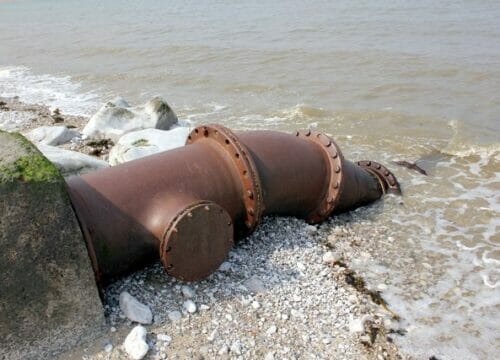
Fact: 30% of the world’s fish are overfished.
Overfishing happens when fish are caught quicker than new fish can be born to replace them. When this happens, there are fewer and fewer fish of a certain species and the species may eventually go extinct.
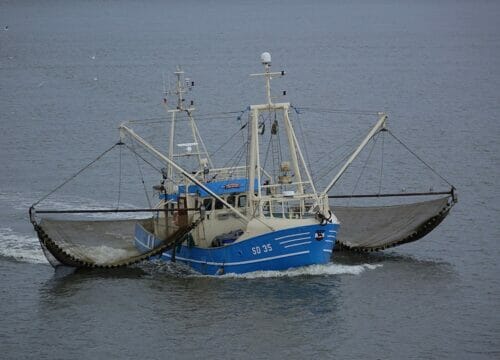
Many species of fish are at risk of being fished to extinction. When overfishing happens, lots of people who rely on fish for their food or income may end up going hungry. When a species disappears, it affects the rest of the ocean’s ecosystems because everything is connected.
Some fishing methods cause mass destruction. One method that is particularly bad for the planet, is called bottom trawling. When bottom trawling happens, fishermen drag a massive net along the bottom of the seabed. The net collects all fish within its path, so it is quite an efficient way of catching fish. The problem is that the net also catches many creatures that the fishermen don’t want. So the fishermen throw these back into the sea, but often by the time they get thrown back into the sea, they are dead. To make matters worse, as the nets brush up against the bottom of the ocean, they damage the seabed. This kills corals that live there and provide homes for fish, as well as other sea creatures living on the bottom of the seabed. Watch the video above about overfishing and how it has come about.
Fact: About half of the world’s shallow-water coral reefs have already been destroyed.
Oceans absorb about 30% of the carbon dioxide that humans produce.
While this lessens the effects of climate change, it has devastating effects on life below water.
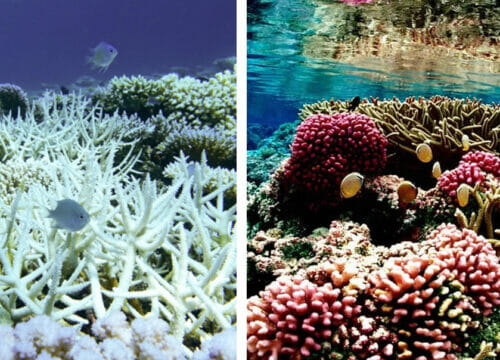
Carbon dioxide makes the seawater more acidic. Acids can be a little harsh on certain things. You probably know the sharp taste of a lemon and maybe you’ve tried to dissolve an eggshell using a carbonated beverage (also known as a fizzy drink). When seawater has more acid, creatures with shells struggle to grow. As these species struggle to survive, they aren’t there for other creatures to eat anymore, disrupting entire ecosystems.
The Great Barrier Reef, the world’s largest coral reef system, is an example of sea life facing severe threats from ocean acidification. Listen to the story called ‘The Great Barrier Thief’ in the video above.
Lots of amazing people have already begun to make big leaps with cleaning up and protecting Life Below Water. Volunteers are giving up their time to clean beaches up, scientists and innovators are creating technologies to clean the oceans up and governments are implementing laws to protect the oceans.
It’s time to clean up the oceans and to put measures in place so that they don’t get polluted again.
Large plastics can be cleaned up from beaches in clean-ups where people volunteer their time to pick litter up off the beaches. Fantastic innovators have also come up with a whole host of technologies that can help us remove plastic, especially smaller microplastics, from our oceans. For example, Anna Du has developed a robot that detects plastics in the ocean and maps out where the plastic is building up so that it can be removed.
As to oil, technology can be used to remove or dilute oil from the water. These include technologies such as booms, skimmers, sorbents and dispersants.
Laws can be implemented to ban unnecessary use of plastics – especially single-use plastics. For example, straws, plastic cutlery, plastic bags and products with microbeads should be banned completely. Laws can also force companies to take extra care to prevent oil spills and clean them up if they do happen. For example, it can be made compulsory that companies working with oil in any way must develop a plan to prevent spills and control them if they do happen. Some countries, such as the UK and USA, already have laws – called The Oil Pollution Act – that do this.
Financial measures can be used to help encourage people to engage in planet-friendly behaviours. For example, coffee shops can offer discounts if customers bring their own refillable cups.
Education can teach people about how to recycle so that plastic products don’t end up in the oceans.
When people use planet-friendly ways to fish, everyone can continue to enjoy eating fish from the sea.
Marine protected areas can ban or reduce fishing levels, giving the sea a chance to recover. Marine Protected Areas need to be combined with planet-friendly fishing methods so that people don’t simply overfish elsewhere.
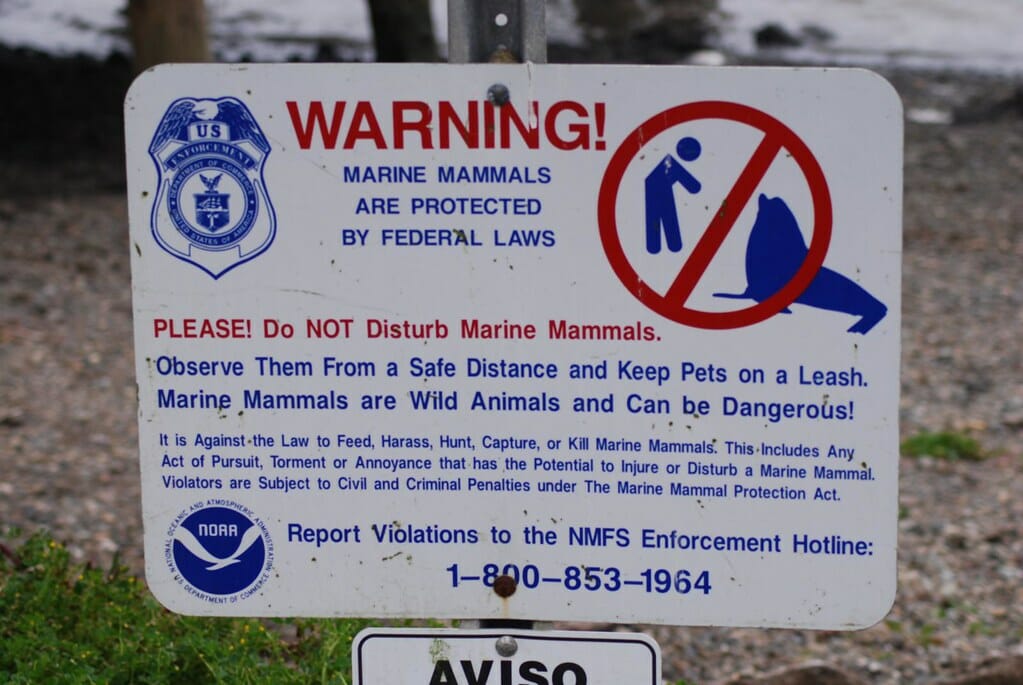
Ban trawling so that Life Below Water is never harmed or killed unnecessarily. Governments can help support companies affected by trawling bans by buying back fishing vessels fitted for trawling and supporting fishermen to adopt new, planet-friendly methods.
Put catch shares in place so that fishermen don’t get carried away being greedy and fishing more fish than are being born. Governments can give fishermen and fishing businesses limits on how much of each species they are allowed to catch. This is called their total allowable catch. Their fishing boats and ships are checked when they return to land to make sure that they do not catch more than their share. Using catch shares makes seafood more valuable, meaning a higher, more predictable profit for fishermen while protecting the environment.
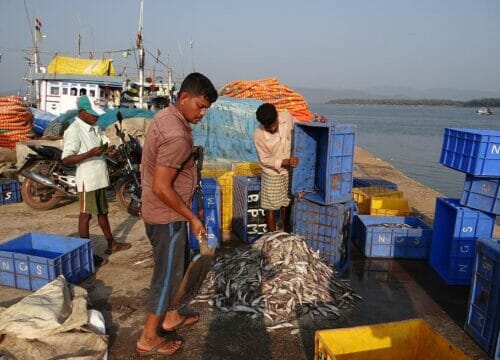
Certification helps buyers tell which fish were caught using planet-friendly methods and which ones weren’t. This helps people make responsible choices about what to buy. People usually choose the more planet-friendly option, which puts pressure on producers to get certified. There are several fishing-related certifications. One of the most common ones is the Marine Stewardship Council blue tick.
We need to protect the ocean from climate change.
There are many ways to fight climate change, but the bottom line is that both people and businesses need to change their behaviour. Everyone needs to become more conscious of how much carbon dioxide is released as a result of their travel, electricity use and food choices. Governments can make it easier for people to make these changes by helping them to pay for the planet-friendly options and educating people on what is good and bad for the environment.
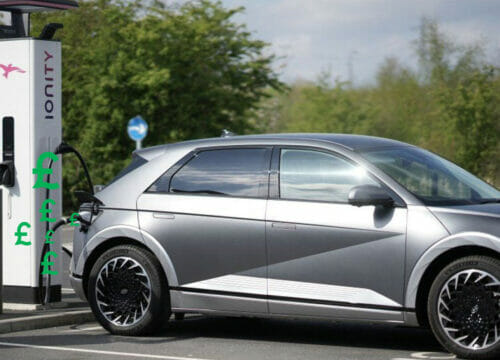
Now that you understand a bit more about Life Below Water, it’s time to make a difference. Remember, some problems can seem overwhelming, but everyone just needs to do their bit. You might not have an amazing invention, but even the smallest actions make you a hero! If you want to do something practical to help, the power is in your hands. Take a look at some ways you can take action right now.

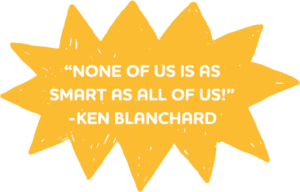
If you have any other ideas of SuperKind things people can do to help look after life below water, we would love to hear from you here.
WWF is a global environmental charity, and we’re bringing our world back to life.
With nature in freefall, we’re urgently tackling the underlying causes that are driving the decline, ...
Kids Against Plastic is a youth-led charity that aims to help young people (and not so young people) learn about environmental issues and take action against them.
Here are some amazing young people who cared about Life Below Water and took action to make change happen. These change makers were all passionate about the same cause but used their unique skills to make change happen in different ways.
Everyone can help make a difference. Consider what your unique superpower might be. Are you someone with a strong voice who likes to spread awareness by talking to everyone you meet? Or do you prefer a behind the scenes approach – making sure that donations are collected to take to those in need?
Campaigning for people and businesses to stop using single-use plastics since they were 10 and 12 years old.
Campaigning for people and businesses to stop using single-use plastics since they were 10 and 12 years old.
Petitioning for schools to give children reusable water bottles since he was 7 years old.
Campaigning for the banning of plastic bags in Bali since they were 10 and 12 years old.